NIL
Oregon NIL bill advances in state legislature; could conflict with House settlement
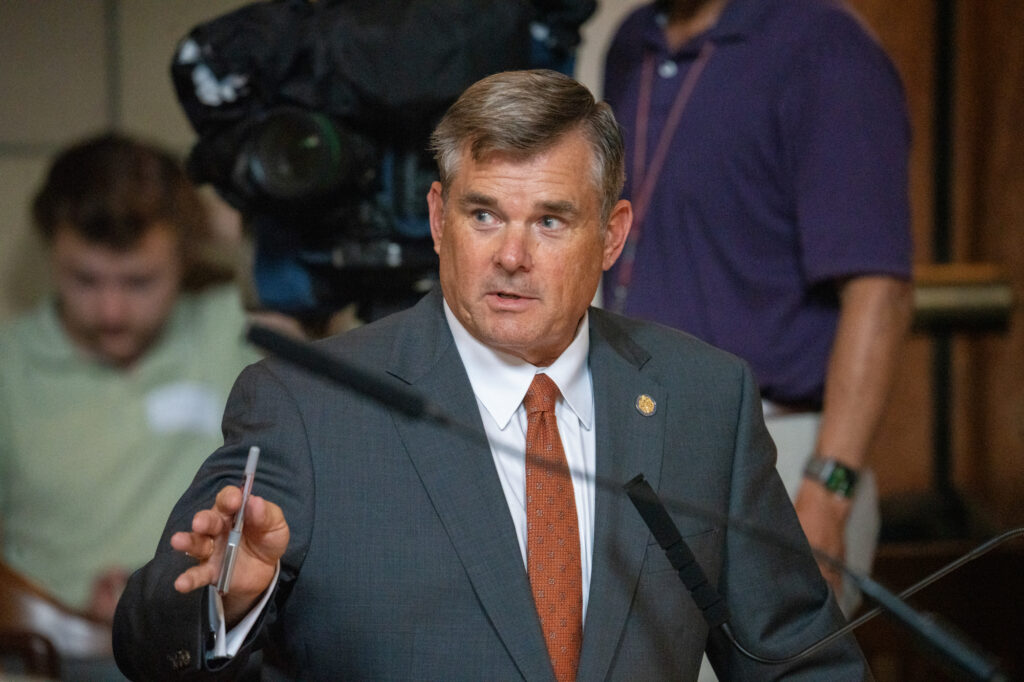


A bill that modifies existing Oregon law around student-athletes earning money from their Name, Image and Likeness (NIL) advanced in the state legislature last week.
On April 10, House Bill 3694 passed in the Oregon House with 46 votes in favor, nine against, and five not voting. It moves to the Senate chamber, where a first reading is scheduled for Monday.
HB 3694 has the backing of the University of Oregon and a letter of support from Oregon State student-athlete and U.S. Olympian Jade Carey. But OSU athletic director Scott Barnes and some outside legal experts have expressed skepticism over the bill’s potential conflict with the forthcoming House settlement, which seeks to provide universal standards for NIL distribution among NCAA member institutions.
“We’re trying to build infrastructure to create consistency and standards at a national level,” Barnes, who is part of the committee that helped craft proposed NIL standards, said last month. “Any variation of those standards limits the effectiveness of what we’re building. It’s not unlike past years with NIL where there is a patchwork of different state legislation, and the standards aren’t consistent, so you have different opportunities for different student-athletes instead of the same access and same opportunities.”
Critics of HB 3694 point out it could prevent the NCAA and conferences from enforcing limits on NIL payments — a key component of the House settlement, which would include a roughly $20.5 million NIL “salary cap” per school. Defending national champion Ohio State’s athletic director once claimed it spent that much on its 2024 football roster alone.
Schools like Oregon State say they won’t come close to the proposed cap, with multiple sources telling The Oregonian/OregonLive that the Beavers’ men’s basketball NIL budget was roughly $800,000 last season, and their roster was soon decimated in the transfer portal. But powerhouse institutions like Ohio State, Georgia and the Phil Knight-backed Oregon conceivably have more than enough capital to go beyond the cap if there was a legal basis to do so.
While none of those schools have publicly expressed a desire to skirt the House settlement rules — nor will they say so, considering every major institution is expected to sign on to the agreement — legal experts question whether the rules are even enforceable without the additional backing of federal legislation. Particularly with potentially conflicting state legislation popping up around the country.
“A federal bill coming alongside the settlement in a constructive way that creates synergy around correcting this out of control marketplace, that is crucial,” Barnes, also among the power brokers pushing federal legislators for a comprehensive NIL bill, said in March.
Back to the details of HB 3694. While a sentence about preventing limits on “institutions’ support of student athletes’ economic rights” has been removed from the Oregon bill’s staff summary, the latest version of the bill includes language that critics say could still conflict with the House settlement standards.
“A post-secondary institution of education or an athletic association, conference or organization with authority over intercollegiate sports may not … prohibit, prevent or restrict a student athlete from exercising [the student’s] economic rights,” the bill reads.
“An athletic association, conference or organization with authority over intercollegiate sports may not prohibit a post-secondary institution of education from identifying, facilitating, enabling or supporting opportunities for a current student athlete to exercise the student athlete’s [student’s] economic rights at the student athlete’s post-secondary institution of education,” it later says.
If a school is running up against the cap, and a student-athlete wishes to pursue a NIL deal that might put the school over the $20.5 million limit, would stopping that deal be a violation of the athlete’s “economic rights,” as described in HB 3694? And what if a school “identifies, facilitates and enables” a NIL deal, but the NCAA says no, citing the cap?
Those questions, industry sources and some NIL legal experts say, put the cap and potentially the settlement itself on shaky legal ground in states with legislation similar to HB 3694. Unless, of course, federal legislation addresses that issue and renders the conflict between states and the NCAA moot.
HB 3694 would also prevent the NCAA and conferences from accepting “a complaint, open(ing) an investigation or tak(ing) any other adverse action against a post-secondary institution of education or a student athlete as a result of a violation, or an alleged violation, of the rules or regulations of the athletic association, conference or organization related to a student athlete exercising [the student’s] economic rights.”
Critics worry that could create a scenario where, even if a school in Oregon did violate NIL rules including but not limited to the $20.5 million cap, there would be no mechanism of enforcement. Not only could the NCAA and conferences not investigate or take action against that school for such an alleged violation, they couldn’t even accept a complaint about it in the first place.
The chief sponsor of HB 3694, Rep. John Lively (D-Springfield), previously said the bill was amended so it would not “prevent student-athletes from participating in the (House) settlement or create compliance issues for institutions.”
Whether that rings true remains to be seen, and the debate itself could eventually be silenced by a sweeping, federal NIL bill that matches the House terms.
— Ryan Clarke covers college sports for The Oregonian/OregonLive. Reach him at RClarke@Oregonian.com or on Twitter/X: @RyanTClarke. Find him on Bluesky: @ryantclarke.bsky.social.
NIL
10 most-expensive buyouts of the 2025 college football coaching carousel
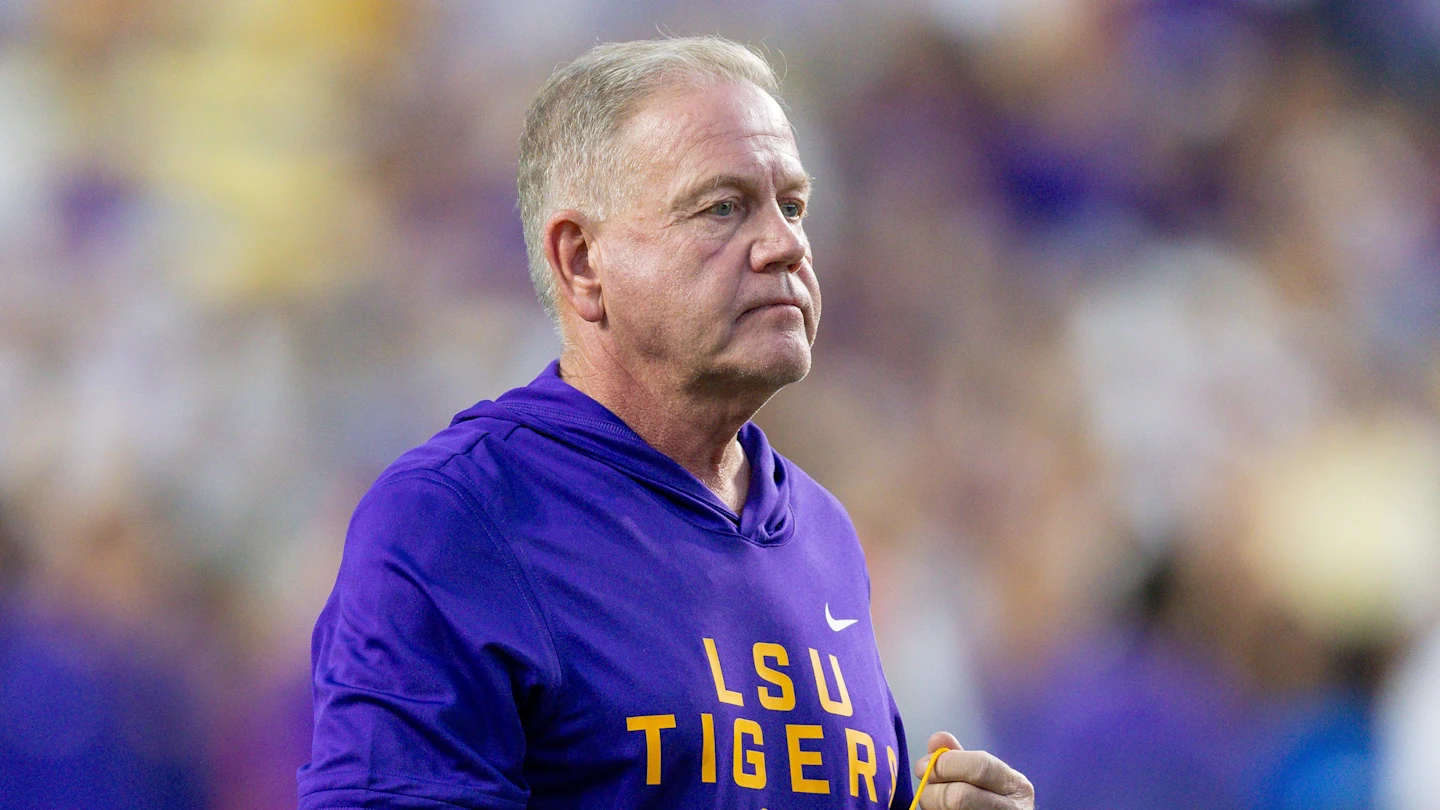
Brother, can you spare $200 million? Apparently, ten top college football programs could (collectively) in 2025, as the sum total of the 10 highest buyouts paid in the college football coaching cycle added up to that figure. It’s worth recalling that these teams paid over $200 million to NOT be coached by ten decidedly unpopular and now former head coaches. Of course, some of these buyouts are subject to mitigation, which will reduce the ultimate amount. Others might be settled (including one listed that already was settled).
Here is a rundown of the ten highest-dollar buyouts being endured in the 2025 college football coaching roundup.
10. Brent Pry (Virginia Tech, $6 million)
Pry was ditched after an 0-3 start to the 2025 season, which left him at 16-24 in his Virginia Tech tenure. On the bright side, Pry’s $6 million buyout was relatively affordable, freeing Tech to make a splash with its next coaching hire… about whom we have more to say.
9. James Franklin (Penn State, $9 million)
One guy who comes out of the coaching shifts smelling like a rose is Franklin. Franklin was owed somewhere between $47 million and $54 million by Penn State, which would have placed him likely second on this list. He negotiated a much lower buyout figure, moved on to his next job, and freed Penn State to secure another viable head coach.
8. Sam Pittman (Arkansas, $9.8 million)
Pittman was 32-34 at Arkansas and was given the boot. He’s still very much in the realm of (relatively) affordable buyouts and hiring Memphis’ Ryan Silverfield shouldn’t break the bank for the Hogs.
7. Justin Wilcox (California, $10.9 million)
Wilcox was 48-55 at Cal and never won over eight games in a season at the school. Oregon coordinator Tosh Lupoi is the new Bears boss.
6. Mike Gundy (Oklahoma State, $15 million)
The decline of Gundy has been one of the more surprising dips in college football. He was 170-90 at Oklahoma State, finished in the top ten in 2021, and won 10 games in 2023. But he’s out and North Texas’s Eric Morris got the nod for the job.
5. Hugh Freeze (Auburn, $15.8 million)
On the other hand, Freeze’s departure was incredibly predictable. In three seasons at Auburn, he was 15-19 and failed to post a winning season. Freeze’s contract reportedly included no mitigation clause, so the Tigers are on the hook regardless of where and when Freeze finds his next coaching role.
4. Billy Napier (Florida, $21 million)
Napier seemed to have survived a rough season at Florida after a late rally last year led to an 8-5 finish. But after a brutal early 2025, he was cut loose with a career 22-23 mark. Even his hefty buyout did not stock Florida from reportedly offering Lane Kiffin $13 million per year to coach the Gators before Florida ended up going after Tulane’s Jon Sumrall as their consolation prize.
3. Jonathan Smith (Michigan State, $33.5 million)
In actual gameplay, Smith was 9-15 in two seasons. Five of the wins were vacated by the NCAA, but even giving him the full benefit of 24 games, a buyout of over $1.3 million per actual game coached is something. To say nothing of nearly $4 million per game won (or over $8 million per NCAA-credited win).
2. Mark Stoops (Kentucky, $38 million)
Formerly the longest-tenured coach in the SEC, Stoops was sent packing after two straight non-bowl seasons. His 72 wins (actually 82 before some NCAA retrospective tinkering) is a Kentucky record. His willingness to allow the University to space out the $38 million instead of paying it in full in 60 days was indicated as a positive part of Kentucky’s ability to make a quick transition to Oregon offensive coordinator Will Stein.
1. Brian Kelly (LSU, $54 million)
Unlike the stories of James Franklin and Mark Stoops, it doesn’t sound like Kelly has gone quietly into the night. After initial disagreements, Kelly filed suit to try to claim every cent of the $54 million he contends that LSU is contractually obligated to pay him. The university seemingly backed down by admitting that his firing was without cause. Kelly was 34-14 at LSU, which certainly threw caution to the wind despite the massive buyout with a huge contract for new coach Lane Kiffin.
NIL
Texas Tech beats BYU for Big 12 title, likely CFP 1st-round bye
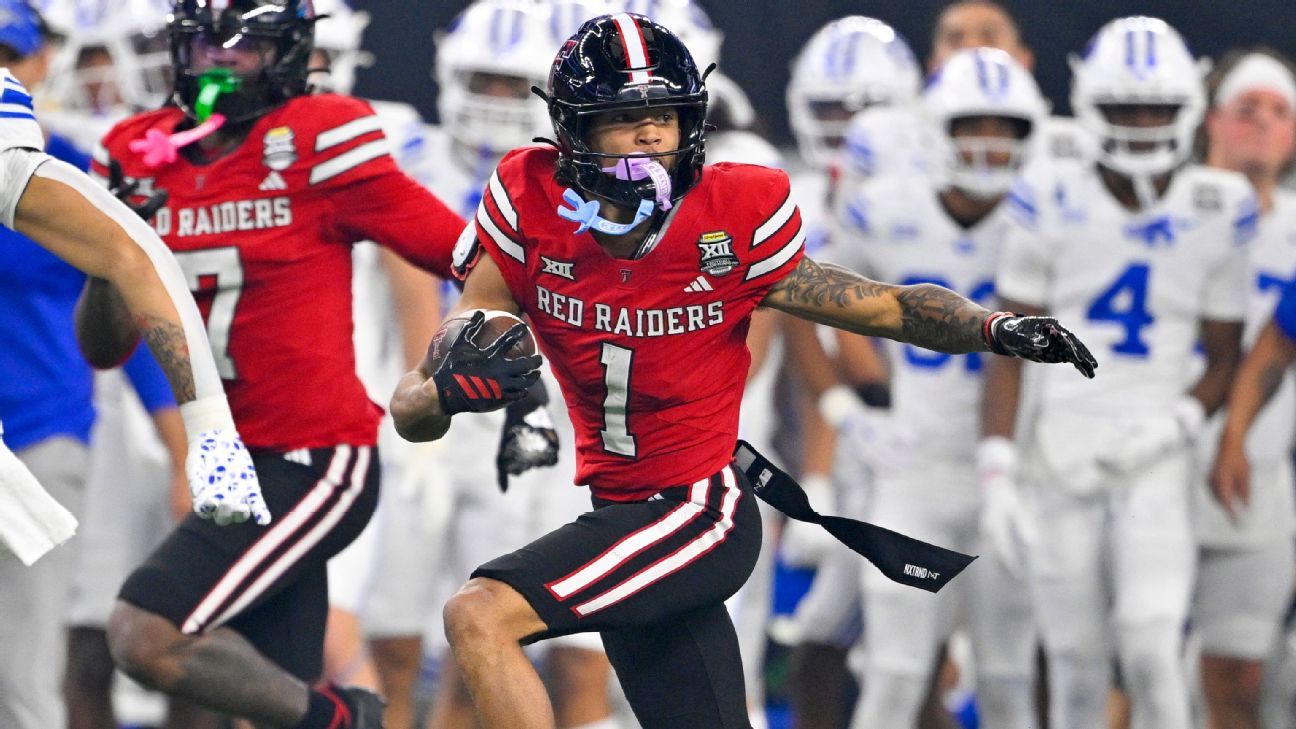
ARLINGTON, Texas — Texas Tech’s all-in bet just paid off.
After an offseason of big dreams and bigger spending, the No. 4 Red Raiders secured their first Big 12 championship in program history Saturday with a 34-7 rout of No. 11 BYU.
It was another dominant display from a 12-1 squad, unlike any seen in Lubbock, one that fuels even more confidence about a deep College Football Playoff run.
After the confetti fell inside AT&T Stadium and coach Joey McGuire hoisted a trophy he had been chasing for four years, he fought back tears as he embraced billionaire board chair Cody Campbell, general manager James Blanchard, athletic director Kirby Hocutt and the many stakeholders who helped set up this program for a historic season.
Together, they ended decades of frustration for a Texas Tech football program that hadn’t won an outright conference title since 1955. When the Red Raiders built their trophy room as part of their $242 million new training facility, they reserved a space for a Big 12 trophy.
In place of hardware, a small block rested on the trophy stand with one word printed on it: “BELIEVE.”
For McGuire, the tears started in the final minutes against BYU, but he said they’ll be flowing again when he returns to Texas Tech’s football building Saturday night and walks past that block.
“That’s when it’s really going to hit me,” McGuire said. “And then, we’ll move it to another space so we can go get another trophy.”
Texas Tech assembled what can now be called one of the greatest transfer portal classes of this evolving era of NIL and transfers in college football, a group of 22 incoming transfers that yielded 11 players who started in the Big 12 title game, four first-team All-Big 12 performers and a projected first-round draft pick in pass rusher David Bailey.
Blanchard believed from the beginning that the Big 12 was not equipped to compete with what the Red Raiders had assembled. The results of that ambitious roster-building experiment: Every Texas Tech victory has been by more than 21 points.
“Mission accomplished,” Blanchard told ESPN. “It’s proof of concept. We’ve got an opportunity to go win a national championship, and I like our chances.”
Texas Tech’s more than $25 million investment for its 2025 roster, blending proven returning starters with high-profile newcomers, created boom-or-bust stakes and a seasonlong narrative — that the Red Raiders were desperately trying to buy their way to the top.
Even after defeating BYU on Saturday, Texas Tech players were asked to respond to the perception that they had built “the best team money could buy.” Linebacker Jacob Rodriguez, a returning senior and the Big 12’s Defensive Player of the Year, was happy to answer that one.
“If we are going to buy a team,” Rodriguez replied, “why not be the best?”
Campbell offered no apologies as he watched Red Raiders coaches and players celebrate Saturday.
“I’m just so proud,” Campbell told ESPN. “The credit goes to the guys who are actually in the arena. These men love each other. They played so hard, so tough. I’m just so proud of this staff, I’m so proud of the university and the alignment we have, all the support we’ve gotten from so many people. It’s been a team effort, the whole effort, the whole way.
“We all came together and had a singular mission, a singular focus, and we got it done. This is something we’ve been waiting on a long time at Texas Tech.”
They got it done with a Red Raiders defense that, as it has this season, made BYU’s offense fight for every yard.
The Cougars opened the game with a well-scripted, 14-play, 90-yard touchdown drive that took nearly seven minutes. They mustered just 110 yards on 45 plays the rest of the day and turned it over four times in the second half, including two interceptions by Tech linebacker Ben Roberts.
“I think we can play with anybody in the country,” Campbell said.
The championship victory should guarantee a top-four seed for Texas Tech and a first-round bye in the College Football Playoff. McGuire said the three-week break ahead will be much needed for his team to recover and prepare for its first playoff run.
“We’re football banged-up,” McGuire said. “If you let us get healthy, I really believe we’ve got another gear.”
Quarterback Behren Morton has been playing with a hairline fracture in his fibula that forced him to miss two games, including the Red Raiders’ lone loss to Arizona State. Morton told ESPN he’s feeling “about 70 percent” healthy and is looking forward to more recovery time.
The quarterback and his coach privately agreed in June that they would win a Big 12 championship this year. And when they did, they planned to walk off the field at AT&T Stadium together.
Before Morton grabbed the game ball, threw his arm around his coach and headed to a locker room filled with celebration and cigar smoke, the senior offered a prideful grin.
“There were a lot of people saying preseason that Texas Tech better do it,” Morton said. “Well, guess what? We did it.”
NIL
Georgia targets $390K from Damon Wilson II in landmark NIL dispute
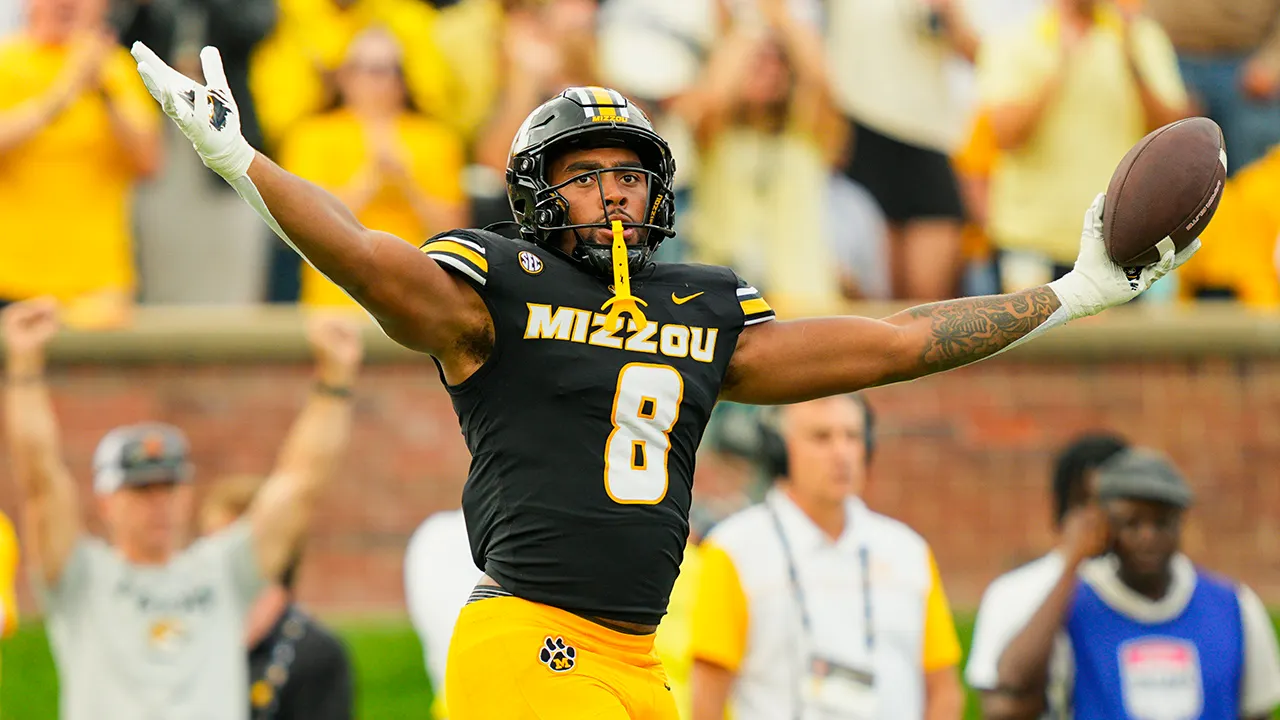
NEWYou can now listen to Fox News articles!
The University of Georgia Athletic Association is taking legal action against one of the football team’s former star pass rushers.
Georgia is asking for damages totaling $390,000 after defensive end Damon Wilson II elected to transfer to Missouri after the 2024 season.
The department cited an NIL buyout clause in Wilson’s contract and requested that a judge compel the defensive end to enter arbitration to reach a settlement. The clause in Wilson’s former agreement effectively acts as a buyout fee for terminating early.

Missouri Tigers defensive end Damon Wilson II celebrates after recovering a fumble during the second half against the Alabama Crimson Tide at Faurot Field at Memorial Stadium Oct. 11, 2025, in Columbia, Mo. (Jay Biggerstaff/Imagn Images)
Wilson was recently served a court summons, legal records show.
CLICK HERE FOR MORE SPORTS COVERAGE ON FOXNEWS.COM
After recording 3.5 sacks during his freshman and sophomore seasons at UGA, Wilson inked a new deal with Georgia’s Classic City Collective. In January, just two weeks after landing the new contract, Wilson made the switch to Missouri.
Wilson had nine sacks in his first regular season with the Tigers.

Georgia Bulldogs helmets on the bench during the Georgia spring game at Sanford Stadium in Athens, Ga., April 12, 2025. (Dale Zanine/Imagn Images)
The formation of collectives has become more common at schools across the nation. Many collectives include liquidated damages clauses in their agreements with players to try to protect financial investments in athletes and discourage transfers.
Wilson reportedly received payouts totaling $30,000 under the terms of his latest deal with Georgia before he left Athens, Georgia. The athletic association argues Wilson owed the $390,000 sum within 30 days of his departure.
CONFERENCE CHAMPIONSHIP GAME PICKS, PREVIEW: WHAT TO EXPECT IN INDIANA-OSU, MORE
“When the University of Georgia Athletic Association enters binding agreements with student-athletes, we honor our commitments and expect student-athletes to do the same,” Georgia spokesperson Steven Drummond said in a statement to ESPN.
Wilson could not be reached directly for comment. Missouri-based attorneys Bogdan Susan and Jeff Jensen are representing Wilson. Susan argued that Wilson’s career decisions were never motivated by money.

Damon Wilson II (8) of the Missouri Tigers against the Mississippi State Bulldogs at Faurot Field at Memorial Stadium in Columbia, Mo., Nov. 15, 2025. (Jeff Le/Getty Images)
“After all the facts come out, people will be shocked at how the University of Georgia treated a student-athlete,” Susan said in a statement. “It has never been about the money for Damon. He just wants to play the game he loves and pursue his dream of playing in the NFL.”
CLICK HERE TO GET THE FOX NEWS APP
Georgia’s move marks one of the first times a school has publicly sought NIL damages from a former athlete over an alleged breach of contract. The dispute sets the table for potentially setting a precedent on whether liquidated damages clauses will act as an effective, defensible replacement for more traditional buyout fees.
However, it should be noted that Arkansas’ NIL collective did retain the services of an attorney to try to enforce a buyout clause in quarterback Madden Iamaleava’s deal. Iamaleava spent his freshman season with UCLA. Wide receiver Dazmin James also left Arkansas, prompting his former school to file a complaint.
Follow Fox News Digital’s sports coverage on X, and subscribe to the Fox News Sports Huddle newsletter.
NIL
Sources: Baylor finalizing hire of Doug McNamee as new AD

Baylor is finalizing the hire of Doug McNamee as its new athletic director, sources told ESPN’s Pete Thamel on Saturday, confirming a report.
McNamee, the president of Field and Stream, worked at Baylor from 2012 to 2018, ultimately as the Baylor senior associate AD, before departing to be the president at Magnolia, the Waco lifestyle brand run by Baylor alums Joanna and Chip Gaines. He joined Field and Stream in 2022.
McNamee replaces Mack Rhoades, who had been athletic director at Baylor since 2016 but stepped down for personal reasons.
Baylor president Linda Livingstone told ESPN recently that a new AD’s task would be to tackle the pressures of funding NIL and revenue sharing in college athletics.
“We have to really work with our donors to step up. We have to work with sponsorships, we have to work on companies that will walk beside us for NIL sponsorships,” Livingstone said. “That’s going to be a really big focus for a new athletic director. … That’s what many, many institutions are looking at right now. How do we supplement and grow financial support for athletics in a way that’s different than we’ve done it in the past that doesn’t put as much burden on our institutions?”
One of McNamee’s first jobs will be to help right the ship in football under coach Dave Aranda, whom Livingstone retained despite Baylor fans’ growing dissatisfaction.
In 2021, Baylor went 12-2 and won a Big 12 championship, but since then, the Bears have gone 22-28 over four seasons.
News of Baylor’s decision was first reported by SicEm365.
NIL
Georgia taking Missouri DE Damon Wilson II to court in NIL contract dispute
Updated Dec. 6, 2025, 12:47 p.m. ET
Georgia Athletics is taking Missouri football defensive end Damon Wilson II to court in a novel, nearly first-of-its-kind case over an NIL contract dispute, the Columbia Daily Tribune confirmed through a university source and court documents filed in Georgia by the Bulldogs.
UGA is attempting to take Wilson into arbitration and is seeking $390,000 in liquidated damages from the star edge rusher, who transferred to the Tigers in January 2025, over what the university views as an unfulfilled contract in Athens. The lawsuit is not against the University of Missouri, only Wilson.
According to an ESPN report, Georgia is arguing Wilson signed a contract — a common practice in the NIL era — with what was then UGA’s main NIL and marketing arm, Classic City Collective, in December 2024.
That collective has since shut down, as UGA has partnered with Learfield to negotiate and facilitate NIL deals in the revenue-sharing era.

The report, citing documents attached to UGA’s legal filings, show Wilson signed a 14-month deal worth $500,000 with the Bulldogs. He was set to earn monthly payments of $30,000 through the end of the contract, as well as two $40,000 bonus payments.
Before announcing his intention to transfer in January, he reportedly was paid $30,000.
The contract states if Wilson left the team or transferred, which he ended up doing by transferring to Missouri, then he would owe the collective issuing the payments a lump sum equal to the amount remaining on his deal.
The bonus payments seemingly were not included, which brings that total to the $390,000 Georgia is now seeking in court.
Wilson, per the report, was only paid a fraction of that sum, but the university is arguing he owes the full amount in damages. It’s unclear why Georgia is arguing it is owed the full amount in liquidated damages.
The Tribune has reached out to a Georgia Athletics spokesperson for comment. At the time of publishing, UGA had not responded to the request for a statement.
According to documents viewed by the Tribune through the Georgia courts records system, UGA filed an “application to compel arbitration” on Oct. 17 in the Clarke County Superior Court, which includes Athens and the University of Georgia. Wilson was served with a summons to appear in court, according to documents, on Nov. 19, three days before the Tigers faced Oklahoma.
A similar case occurred at Arkansas last spring, when quarterback Madden Iamaleava transferred out of Fayetteville after spring camp. It’s unclear whether or not that case has been resolved.
Wilson spent his freshman and sophomore seasons at Georgia. He transferred to Mizzou ahead of spring camp in 2025 and has emerged as one of the top pass rushers in the SEC.
Per Pro Football Focus, Wilson generated 49 pressures on opposing quarterbacks this season, which was the second-most in the SEC behind only Colin Simmons at Texas. He’s listed at 6-4, 250 pounds and could declare for the 2026 NFL Draft, where he would likely be a Day 1 or 2 pick.
The lawsuit raises a contentious point.
By suing Wilson for allegedly not fulfilling the terms of his contract, the school could be treading close to arguing Wilson was paid to play. That’s not how NIL deals currently work. The deals and their payments are typically for an athletes’ likeness for brand deals and marketing. Think of it as advertising money, not salaries.
There’s a reason that’s the case. By paying players for play, there’s an argument they are university employees. University and athletic department leaders are widely against making that distinction, because it would disrupt the amateurism model in place for college athletics.
Wilson’s contract likely includes “liquidated damages” language, which are intended to stop players from transferring.
Missouri currently has multiple players on two-year contracts. Part of that is in the hope that they do not move on after one season.
If Georgia’s arbitration case against Wilson is successful, that would be a groundbreaking ruling in college athletics that could give more weight to liquidated damages clauses in athlete contracts.
NIL
Predicting the College Football Playoff after Texas Tech beats BYU for the Big 12 title
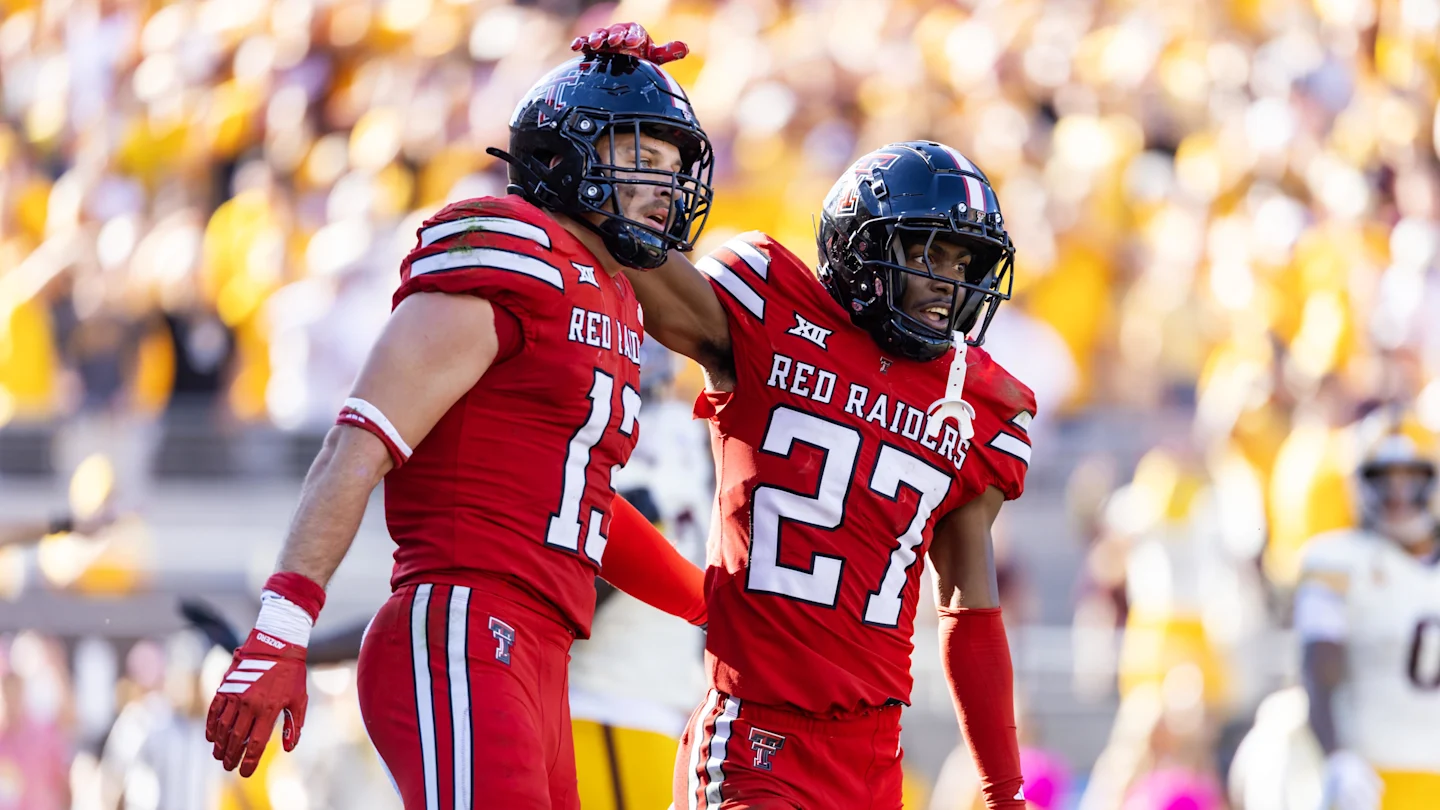
Defense wins championships, they say. That was true of Texas Tech, whose dominant unit overwhelmed BYU behind two key takeaways to win the Big 12 Championship Game and book the Red Raiders a first-round bye in the College Football Playoff.
Ben Roberts intercepted Bear Bachmeier twice, and the Texas Tech offense turned both into points to finally pull away from BYU and win its first-ever conference championship.
With the win, they’ll present a decisive case to the selection committee to stay within the top-four, especially given one of either No. 1 Ohio State or No. 2 Indiana will have to lose the Big Ten championship later today.
Where do things stand in the latest bracket projection? Let’s project what 12 teams will make the College Football Playoff, as of Texas Tech’s big win on Saturday.
Predicting the College Football Playoff bracket

Subject to change pending other Championship Week results
1. Ohio State. We project the Buckeyes will stay perfect by narrowly defeating Indiana to win the Big Ten championship and secure the top overall seed in the playoff.
2. Georgia. Our current expectation is that the Bulldogs will avenge their regular season loss to Alabama and win their second-straight SEC championship.
3. Texas Tech. One of college football’s best defenses left no doubt as to its reputation after swarming BYU to win the Big 12 championship, securing a first-round bye.
4. Indiana. Although we think the Hoosiers will lose the Big Ten title game, it won’t be by much, and they have the overall resume to stay within the top four.
5. Oregon. The one-loss Ducks will stay in the top-five, parked behind the Indiana squad that gave them that defeat earlier this season.
6. Ole Miss. The committee signaled that Lane Kiffin’s exit hasn’t affected the Rebels so far, so it’s likely they’ll stay at 6 when the final bracket is unveiled.
7. Texas A&M. That loss to Texas in the finale deprived the Aggies of a shot at the SEC championship, but the rest of their combined achievements should ensure they won’t have fallen far enough to not host a game in the first round.
8. Oklahoma. One of the nation’s toughest defenses put the Sooners back in playoff contention with a late-season push, but we’ll see how well John Mateer and this offense is able to navigate once the postseason starts.
9. Notre Dame. We expect Alabama loses the SEC championship, allowing the Irish room to move up by one spot.
10. Alabama. Here is where we could see some controversy. There’s a chance the committee keeps the Tide in the bracket if they lose close against Georgia, especially after the selectors jumped Bama over the Irish in the last poll, signaling real confidence in them, win or lose.
But watch for Miami, which will move up in the rankings after BYU’s loss, and there’s a very good case that the Hurricanes deserve it more. Miami would have one fewer loss than Alabama, and that head-to-head win over Notre Dame, too. What do we think? If Georgia beats Alabama, Miami deserves it. The committee may think otherwise, using whatever argument they pick that day.
11. Virginia. James Madison fans are rooting against the Hoos in the ACC championship, because if Virginia loses to Duke, that could pave the way for the selectors to add a second Group of Five team, with JMU ready to take advantage. We still think Virginia beats Duke, though.
12. Tulane. A dominant defensive performance allowed the Green Wave to take out North Texas and win the American championship, and likely entrench their position as the highest-ranked Group of Five team.
What the College Football Playoff bracket would look like
12 Tulane at 5 Oregon
Winner plays 4 Indiana
11 Virginia at 6 Ole Miss
Winner plays 3 Texas Tech
10 Alabama at 7 Texas A&M
Winner plays 2 Georgia
9 Notre Dame at 8 Oklahoma
Winner plays 1 Ohio State
More college football from SI: Top 25 Rankings | Schedule | Teams
Follow College Football HQ: Bookmark | Rankings | Picks
-

 Rec Sports2 weeks ago
Rec Sports2 weeks agoFirst Tee Winter Registration is open
-

 Rec Sports1 week ago
Rec Sports1 week agoFargo girl, 13, dies after collapsing during school basketball game – Grand Forks Herald
-

 Motorsports2 weeks ago
Motorsports2 weeks agoCPG Brands Like Allegra Are Betting on F1 for the First Time
-

 Sports3 weeks ago
Sports3 weeks agoVolleyball Recaps – November 18
-

 Motorsports2 weeks ago
Motorsports2 weeks agoF1 Las Vegas: Verstappen win, Norris and Piastri DQ tighten 2025 title fight
-

 Sports2 weeks ago
Sports2 weeks agoTwo Pro Volleyball Leagues Serve Up Plans for Minnesota Teams
-

 Sports2 weeks ago
Sports2 weeks agoUtah State Announces 2025-26 Indoor Track & Field Schedule
-

 Sports2 weeks ago
Sports2 weeks agoSycamores unveil 2026 track and field schedule
-

 Motorsports1 week ago
Motorsports1 week agoRedemption Means First Pro Stock World Championship for Dallas Glenn
-

 NIL6 days ago
NIL6 days agoBowl Projections: ESPN predicts 12-team College Football Playoff bracket, full bowl slate after Week 14























































